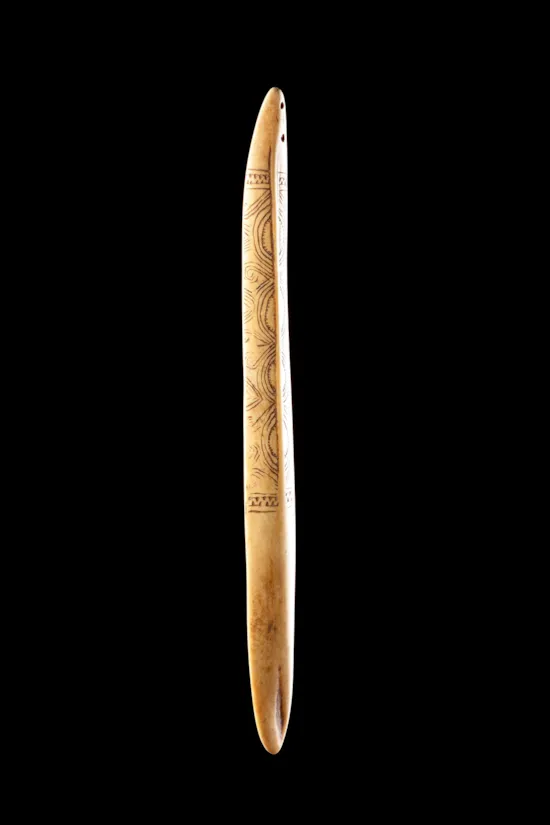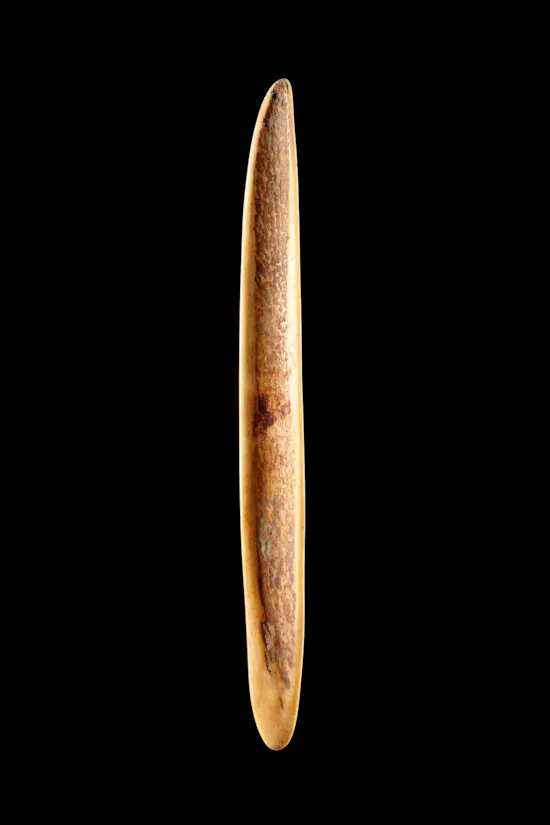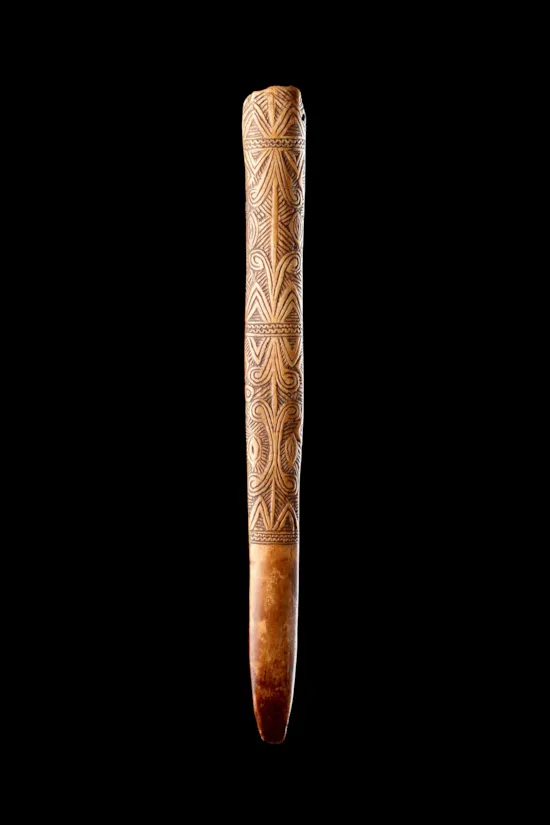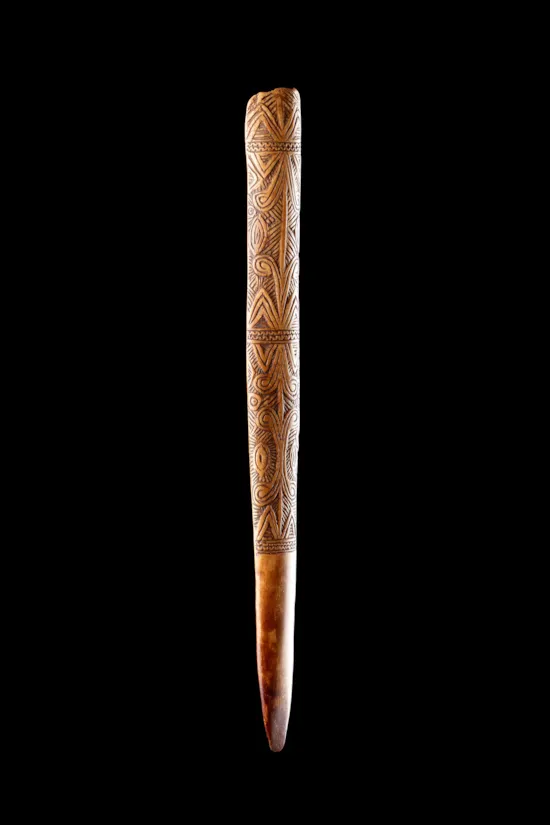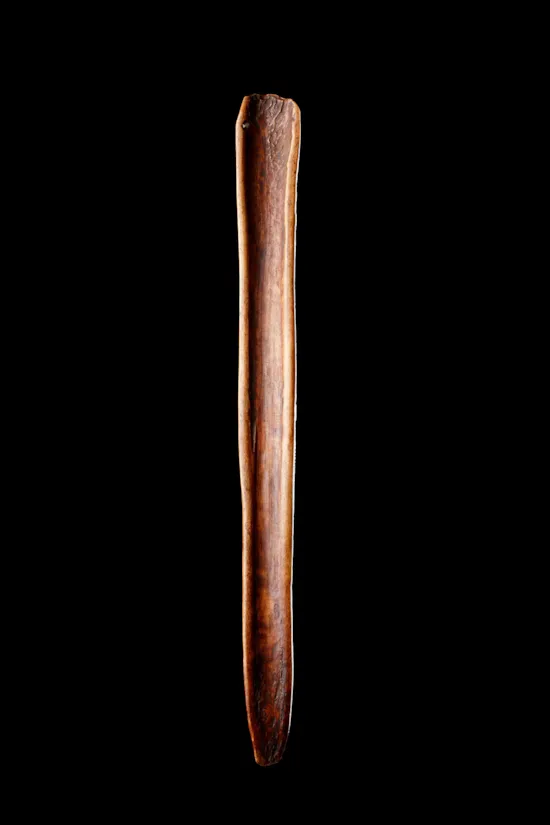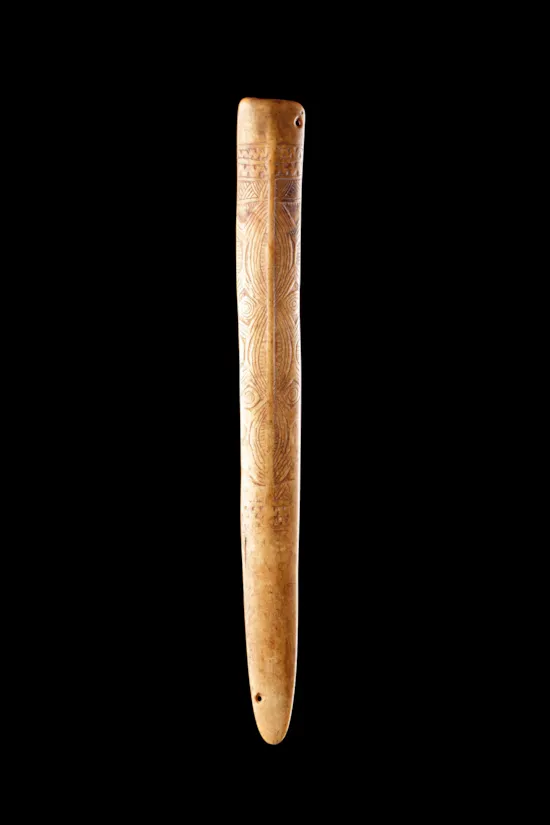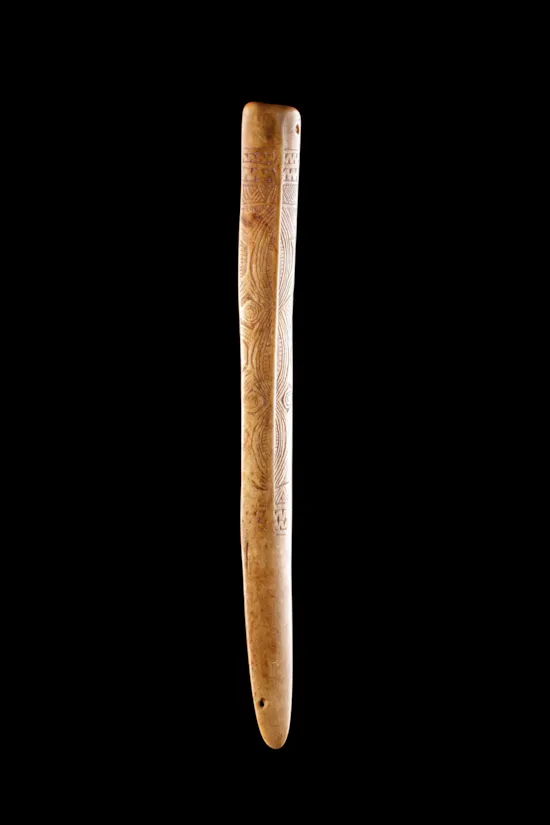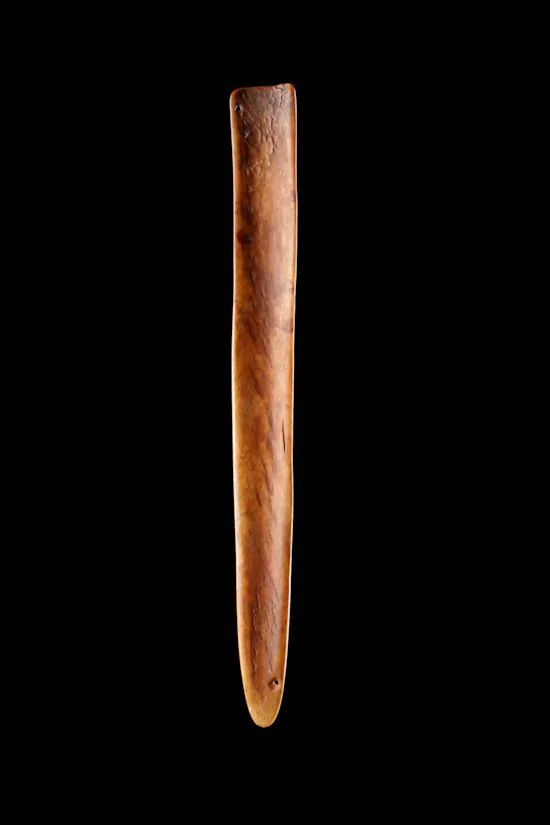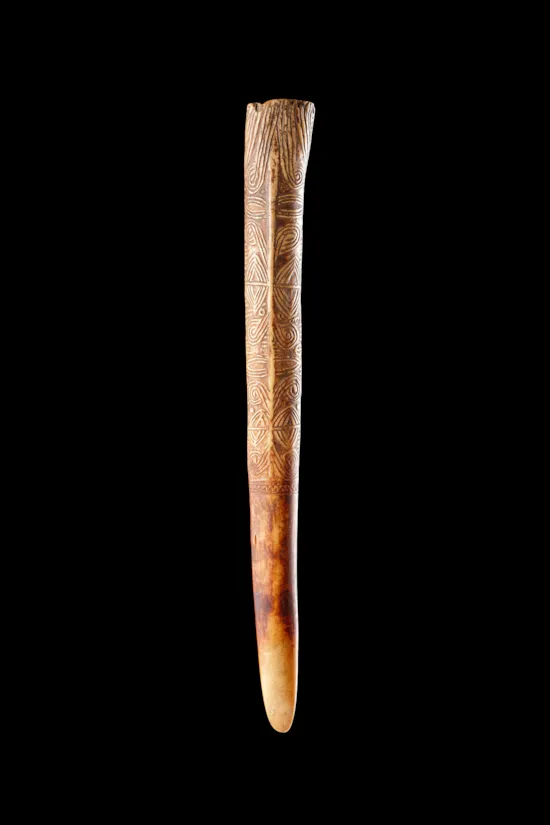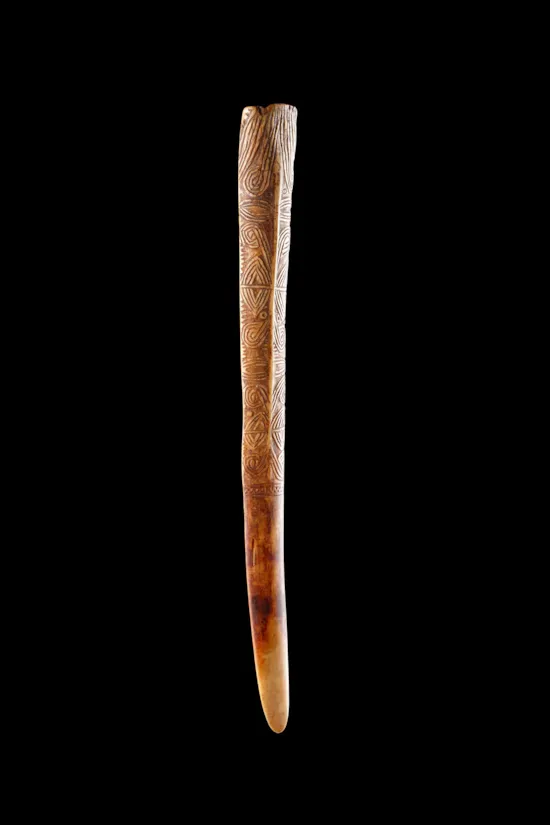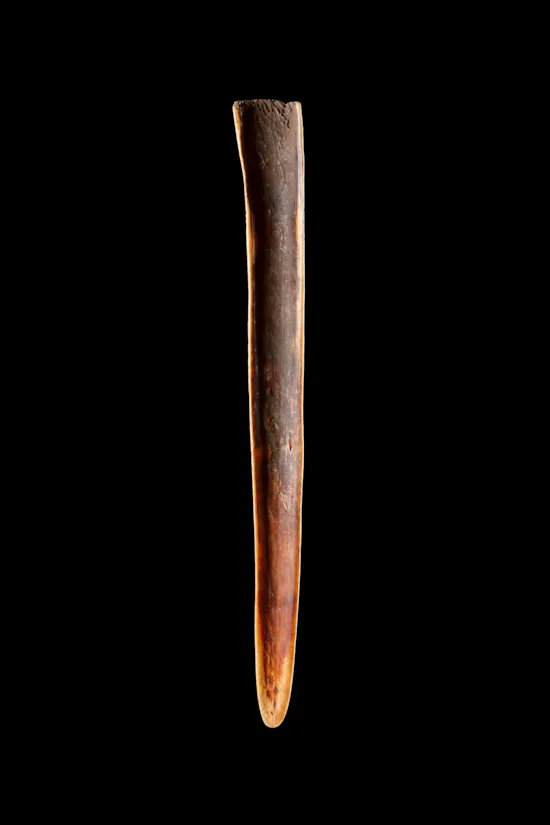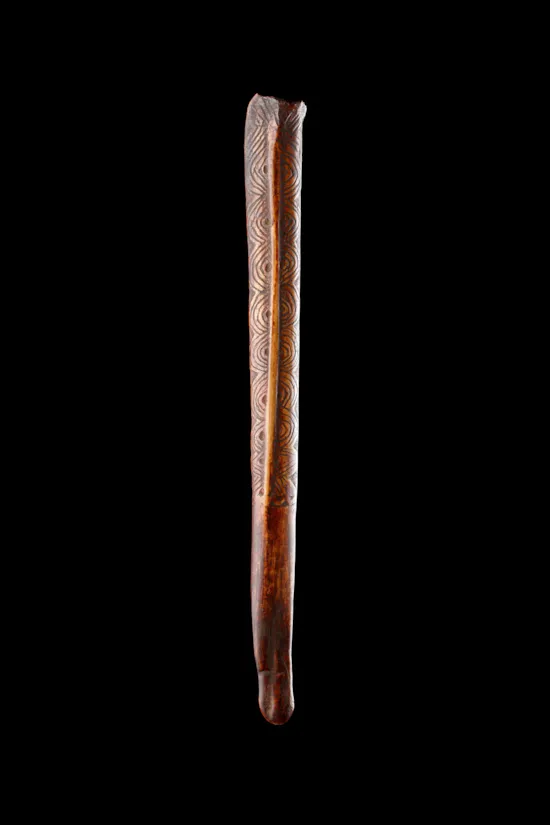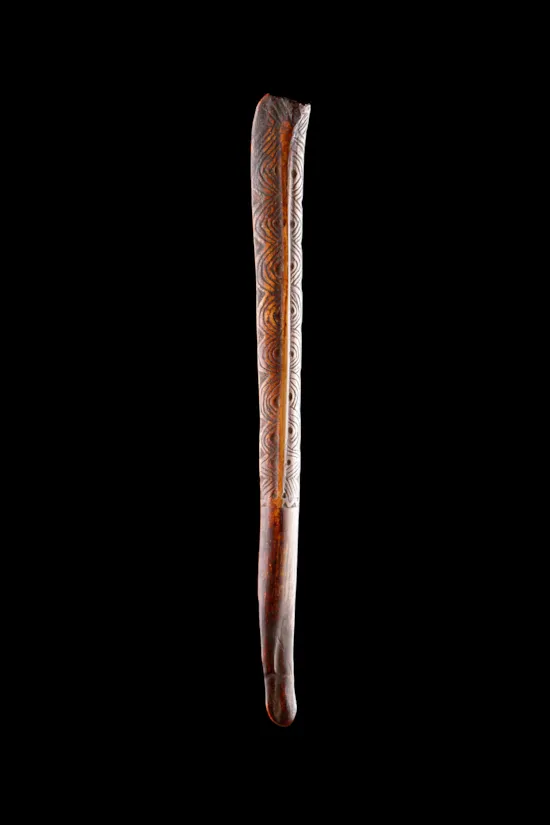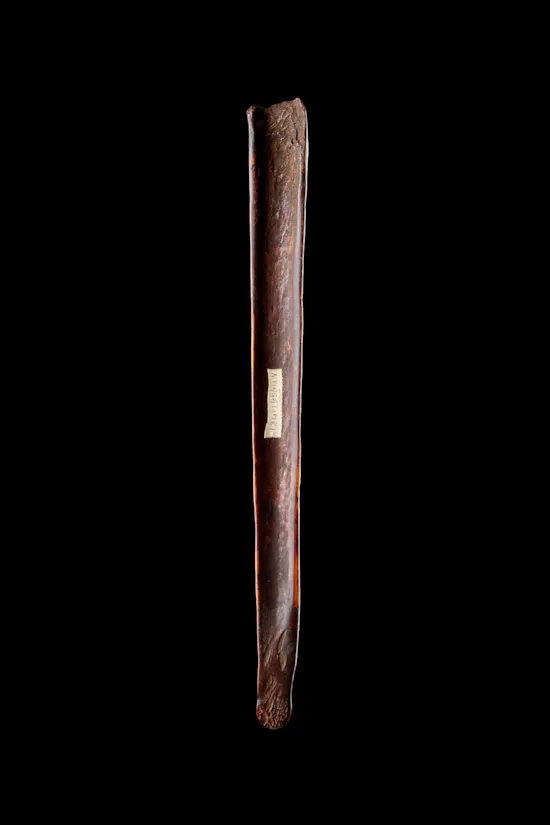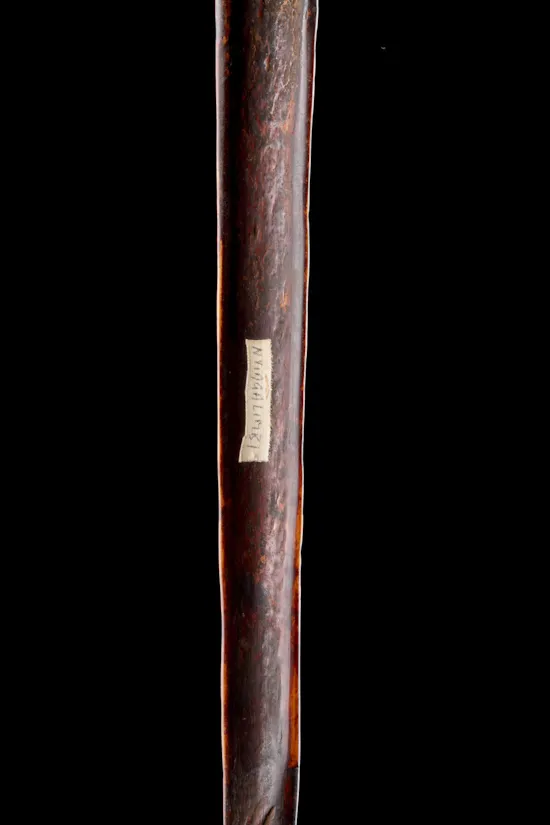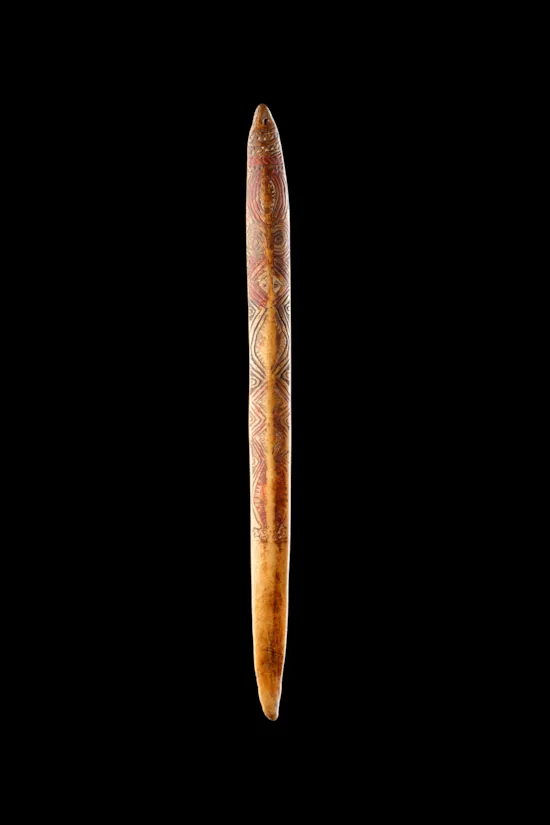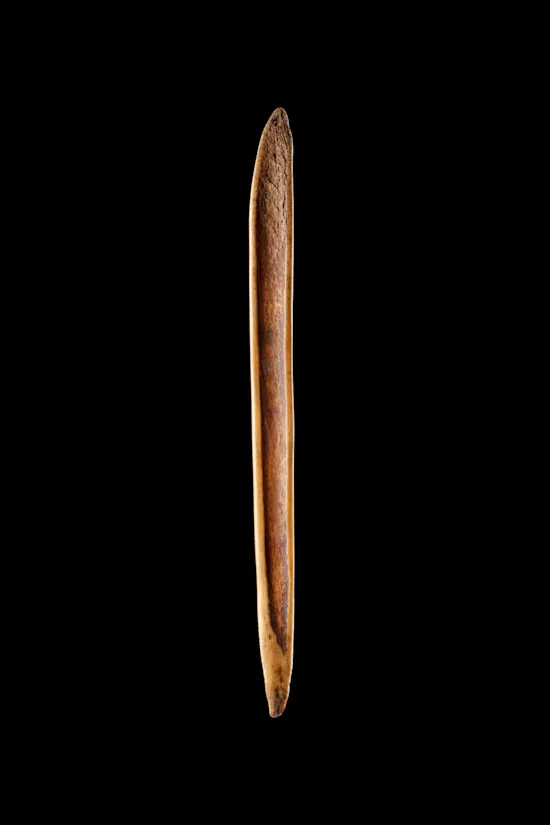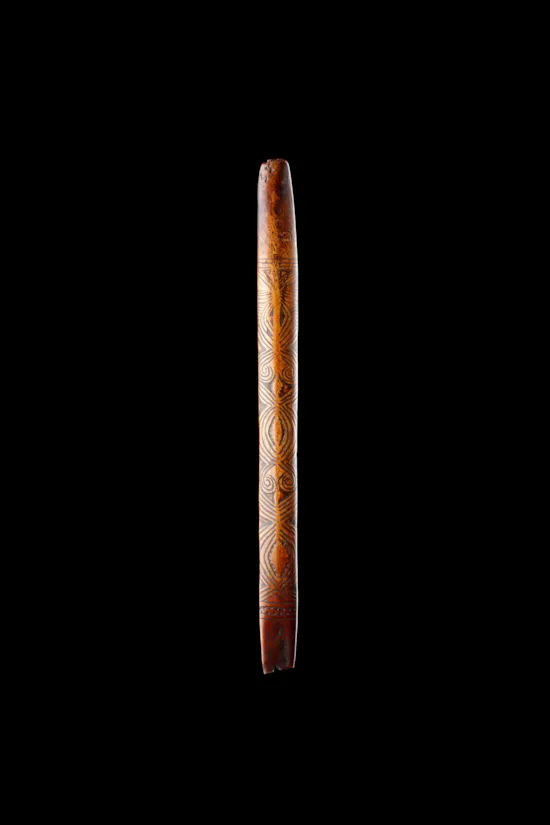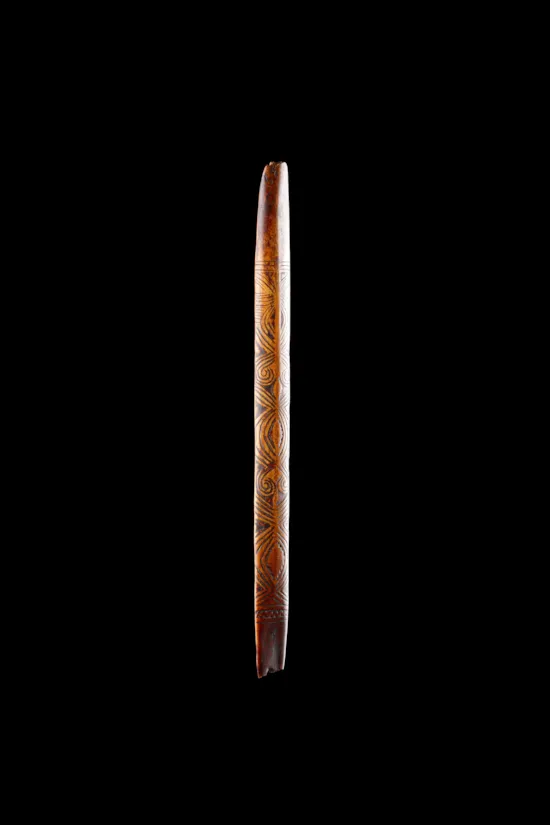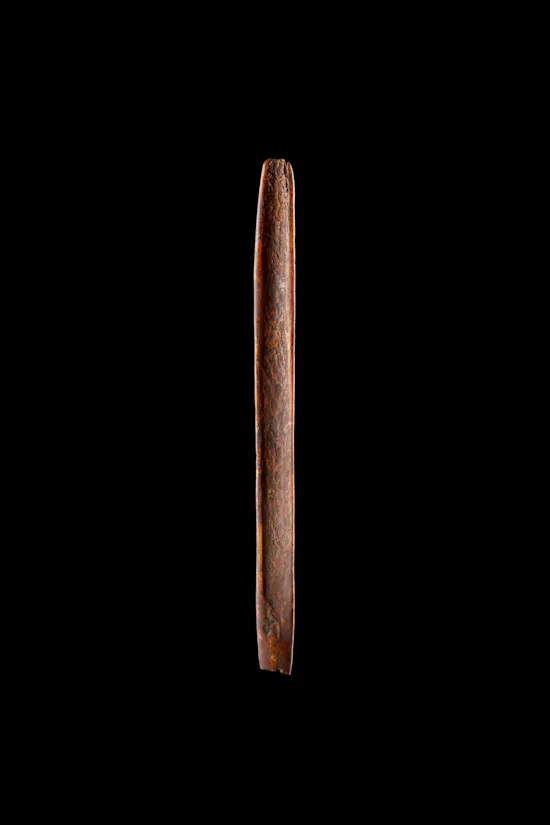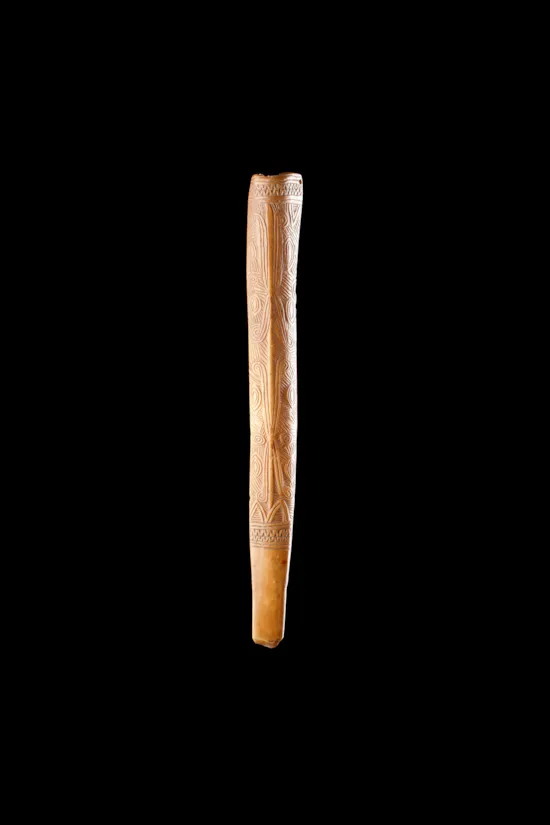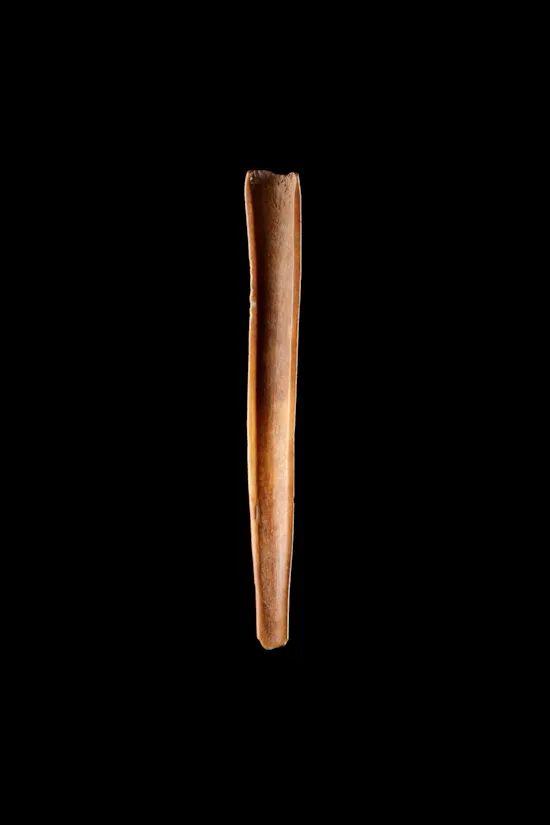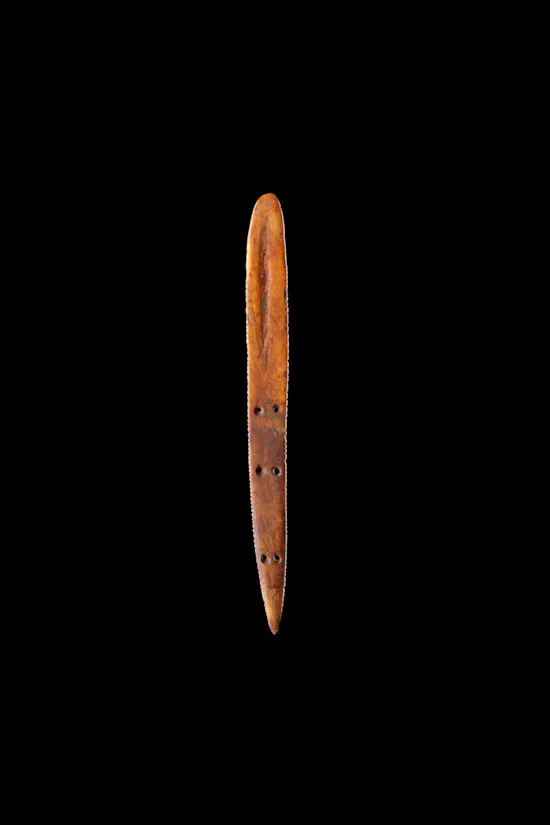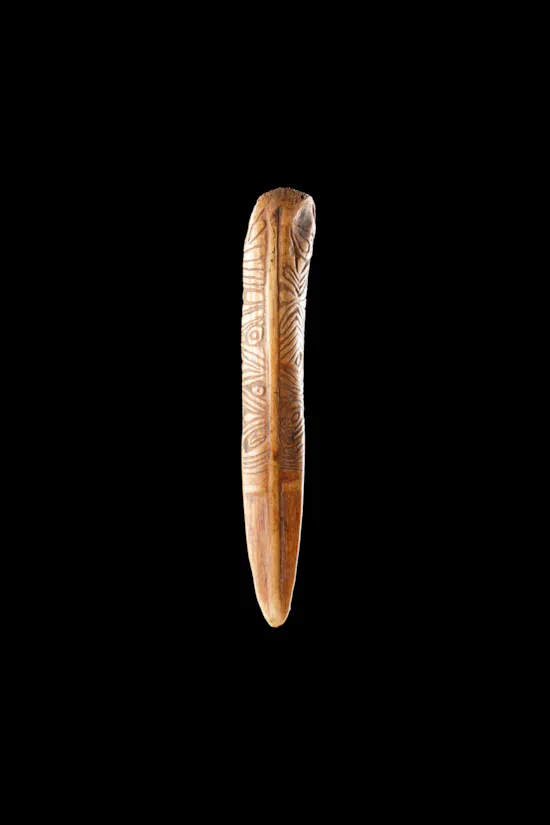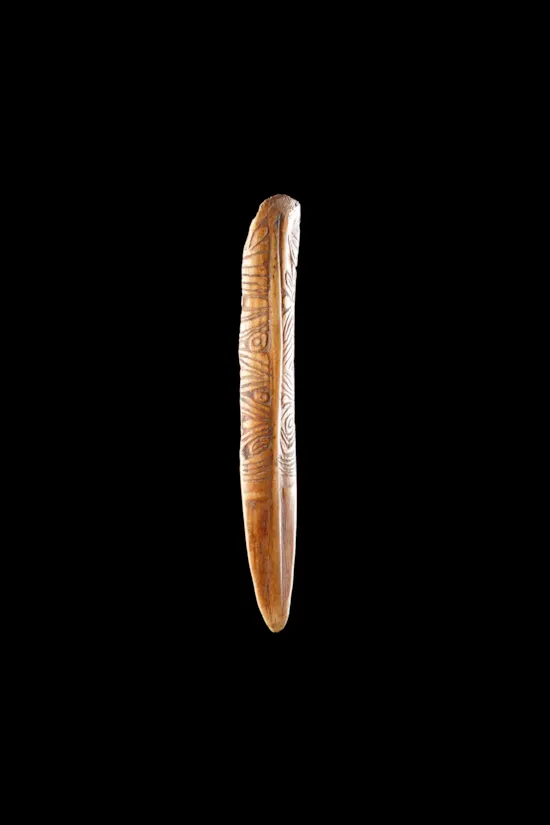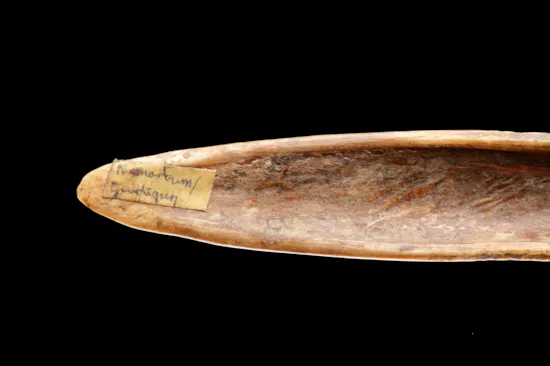Collection of Ten Papua New Guinea East Sepik Province Prince Alexander Mountains Abelam Peoples Cassowary Bone ‘Daggers’
A Collection of Ten Papua New Guinea East Sepik Province Prince Alexander Mountains Abelam Peoples Cassowary Bone ‘Daggers’
Incised with stylised abstract geometric decoration probably used in rituals surrounding the cultivation of long yams some with stone drilled worn holes for use as attachment
An old label attached reading ‘Yina... used for Yam Cutting. Nyiygalimti’
Traces of red ochre lime and black charcoal pigments
All with old smooth worn crusty patinas
19th Century
Size: 33.5cm long - 13¼ ins long (max) / 22cm long - 8¾ ins long (min)
Incised with stylised abstract geometric decoration probably used in rituals surrounding the cultivation of long yams some with stone drilled worn holes for use as attachment
An old label attached reading ‘Yina... used for Yam Cutting. Nyiygalimti’
Traces of red ochre lime and black charcoal pigments
All with old smooth worn crusty patinas
19th Century
Size: 33.5cm long - 13¼ ins long (max) / 22cm long - 8¾ ins long (min)
The Abelam made a larger range of bone objects than any other Sepik group and the majority of them were fashioned from the leg bones of cassowaries. Being hard and durable it was an ideal material for the carving of elaborate abstract decoration and for extensive use in ritual ceremonies. The stylised geometric designs, often outlined with pigments probably represent spirits like those found on house posts and the gables of the ceremonial men’s house.
In New Guinea mythology the cassowary is regarded as the mother of man. At five feet high it is second only to humans in size and an aggressive and dangerous creature. A primordial cassowary-woman is said to have created both the world and the first human beings. Whether a primeval ancestor or a living bird, all cassowaries are believed to be female and the fleshy wattles that hang from their neck are identified as breasts. However, the dangerous birds easily embody aggressiveness, the ideal quality sought by a male warrior.
Bone daggers were supernaturally powerful objects that frequently played important roles in male initiation ceremonies and other rituals. Ornate examples such as these which have relatively blunt tips were probably created as ceremonial objects and were most likely to have been used in the cultivation of long yams. Cults associated with yams are paramount among the Abelam. These massive tubers attain lengths of up to 3.7 metres long and their cultivation is a sacred activity surrounded by magic and ritual. It is also highly competitive as an Abelam man’s social status is determined not only by his abilities as an orator and warrior, but also by his success in growing long yams. Each man has a permanent exchange partner ‘chambera’ to whom he presents his longest and largest yams following the annual harvest receiving those of his partner in return. As the massive yams are presented they are measured and their dimensions carefully noted. Men who are able to present their ‘chambera’ with longer yams than they receive gain prestige and renown.
The exchange is a highly public affair in which each man brings his best tubers to be displayed on the village dancing ground in front of the men’s ceremonial house. Lavishly decorated, the largest examples are suspended in a reclining position from long poles and crowds of people gather to witness the spectacle and inspect the yam growers’ achievements.
In New Guinea mythology the cassowary is regarded as the mother of man. At five feet high it is second only to humans in size and an aggressive and dangerous creature. A primordial cassowary-woman is said to have created both the world and the first human beings. Whether a primeval ancestor or a living bird, all cassowaries are believed to be female and the fleshy wattles that hang from their neck are identified as breasts. However, the dangerous birds easily embody aggressiveness, the ideal quality sought by a male warrior.
Bone daggers were supernaturally powerful objects that frequently played important roles in male initiation ceremonies and other rituals. Ornate examples such as these which have relatively blunt tips were probably created as ceremonial objects and were most likely to have been used in the cultivation of long yams. Cults associated with yams are paramount among the Abelam. These massive tubers attain lengths of up to 3.7 metres long and their cultivation is a sacred activity surrounded by magic and ritual. It is also highly competitive as an Abelam man’s social status is determined not only by his abilities as an orator and warrior, but also by his success in growing long yams. Each man has a permanent exchange partner ‘chambera’ to whom he presents his longest and largest yams following the annual harvest receiving those of his partner in return. As the massive yams are presented they are measured and their dimensions carefully noted. Men who are able to present their ‘chambera’ with longer yams than they receive gain prestige and renown.
The exchange is a highly public affair in which each man brings his best tubers to be displayed on the village dancing ground in front of the men’s ceremonial house. Lavishly decorated, the largest examples are suspended in a reclining position from long poles and crowds of people gather to witness the spectacle and inspect the yam growers’ achievements.
Collection of Ten Papua New Guinea East Sepik Province Prince Alexander Mountains Abelam Peoples Cassowary Bone ‘Daggers’

SOLD
